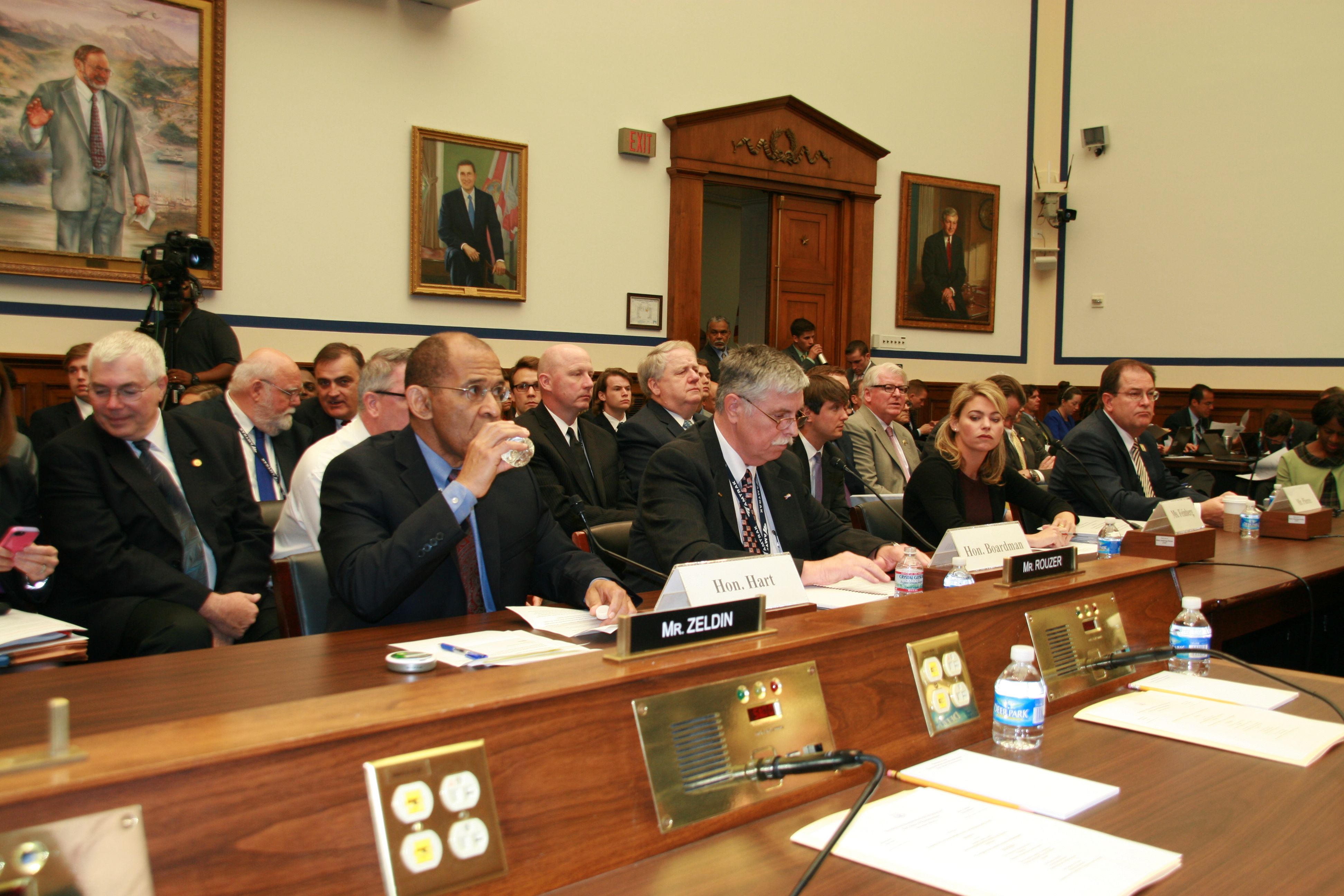WASHINGTON — Frustrated after a disappointing fact-finding hearing, the chairman of the House transportation committee give investigators a 15-day deadline to provide the public with clues about the cause of the deadly Amtrak train derailment last month in Philadelphia.
“Obviously, there are a lot frustrations in this committee, and certainly a lot of tension to the lack of answers,” said Rep. Bill Shuster, R-Penn., who heads the Transportation and Infrastructure Committee, “it’s been three weeks now and there are Americans who are still looking for answers.”
Officials from Amtrak, National Transportation Safety Board, Federal Railroad Administration and a railroad workers union were summoned to the first congressional oversight hearing since Northeast Regional 188 derailed on a curve in Philadelphia on May 12. Instead of providing specifics, as many lawmakers likely expected, the investigative bodies testified that more research is needed to pinpoint the cause of the tragedy, which claimed eight lives and injured more than 200.
“A preliminary examination of the signals system has revealed no anomalies or malfunctions,” said Christopher Hart, chairman of National Transportation Safety Board, “an extensive review of phone data provided by the engineer’s phone carrier is ongoing to determine if his cell phone was used while operating the train.”
Hart said investigation around engineer Brandon Bostian, who was operating the speeding train at the time of the accident, involves correlating Bostian’s cellphone records with data from different time zones to determine whether he was using his phone when the train crashed. It was going 106 miles per hour, more than twice the speed limit for the turn.
“We found out that texts were in one time zone, and voices were in another,” said Hart. “It turned out to be far more complicated than anybody has anticipated.”
Joseph Boardman, president and chief executive officer of Amtrak, said that safety continues to be a top priority for the company. He reiterated his promise to install Positive Train Control systems on all of Amtrak’s Northeast corridor railroads by Dec. 31, 2015.
“I still believe that the single greatest contribution that my generation of railroaders can make to the industry is to implement PTC as rapidly as possible,” said Boardman.
Positive Train Control is a system that monitors train movements and automatically stops or slows down the train if it detects that it is going over the speed limit for designated stretches of track. In 2008, Congress required all train companies in the U.S. to implement the PTC system by the end of this year. That mandate came after a Metrolink commuter train and a Union Pacific freight train collided in Chatsworth, California, resulting in the deaths of 25 people. However, legislators from both sides have proposed extending the deadline.
The transportation safety board and Federal Railroad Administration have long urged railroad companies to adopt the train control system. But most companies have indicated they won’t meet the deadline due to a lack of funding.
“This unfortunate accident is one of many accidents that would have been prevented by PTC,” said NTSB’s Hart.
PTC would be a significant resource in accidents where human errors play a key role, according to the regulatory agencies.
“Though the cause has not been discovered, but one thing is sure, speed is a significant factor,” said Sarah Feinberg, acting administrator of Federal Railroad Administration at the Department of Transportation.
The agencies said they are still trying to figure out why the engineer was operating the train at such as a high speed.
Bostian sustained a head injury in the derailment and said he had no recollection of what happened in the minutes before the crash. He has complied fully with the investigation, officials said.


